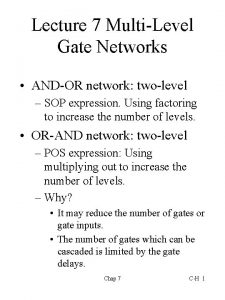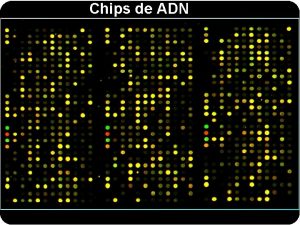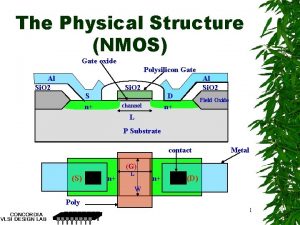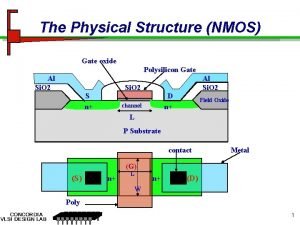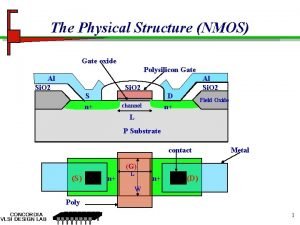Hierarchical Physical Design Methodology for MultiMillion Gate Chips

















- Slides: 17

Hierarchical Physical Design Methodology for Multi-Million Gate Chips Session 11 Wei-Jin Dai

Overview • Introduction • Challenges of hierarchical design • Hierarchical methodology – Full chip physical prototyping • Performance data • Summary 2

Introduction • As chip size and complexity grow, hierarchical design approach is necessary • During last 12 months, there is a big increase in the number of chips designed with hierarchical approach • The advantages of hierarchical approach is divide-and-conquer 3

The Challenges • How to get full-chip (10 million gates+) physical reality early on to identify potential problems? • How to have convergence process to reach design closure from beginning to end? • How to achieve die utilization similar to “flat” approach? • How to achieve clock speed and skews similar to “flat” approach? • How to automatically generate optimal pin assignments for each module? • How to automatically come up with realistic timing budgets for each module? • How to achieve top level timing/signal integrity closure? 4

Creating the Physical Prototype Flat Full-Chip Delivers an Accurate Physical Prototype • Full-chip flat prototype delivers the complete physical, timing, clock and power data – Eliminates the guessing of the traditional block-based approaches • Drives the partitioning in manageable blocks 5

Prototyping Starts Early in the Flow RTL/ Black box 75% netlist/ Black box Complete netlist Prototyping Estimation Initial timing budgets Refinement Design Completion Optimization Refined timing budgets • Most accurate view possible at all design stages • Physical timing budgeting drives synthesis 6

Hierarchical Design Flow • Quick synthesis • Floor planning Flat Full Chip • Placement Physical Prototype • CTS • Trial route • Die size • Timing NO Physically • Clock skew Feasible? • Power • SI • Pin assignment • Timing budget Physical Partitioning • Clock spec • Power grid Top Level Implementation CTS, Optimization, Power Optimized Top Level Netlist 7 DEF Placement LEF/GDSII RTL/Black Box Process Data Chip Level Timing Constraints Partition Partition Data Data Block Implementation Place, CTS, Optimize DEF Placement

Hierarchical Partitioning • • Partitioning 8 Pin assignment Timing budgeting Clock tree generation Power grid planning Independent block-level implementation So. C assembly

Accurate Pin Assignment Accurate Physical Prototype Flat Full-Chip Top Level Partition View • Full-chip prototype results in optimal pin placement – Results in narrower channels and reduced die size – Reduces the routing congestion – Improves the chip timing 9

Timing Budgeting Block 1 L Block 2 L L Block 3 Each block requires: • Clock definition • Set_input_delay • Set_output_delay • Set_drive • Set_load • Path exceptions (false, multicycle paths) Accurate timing budgets result in predictable timing convergence 10

Hierarchical Clock Tree Synthesis • Accurate physical timing data enables the creation of an optimal clock tree – Block-level followed by top-level clock tree • Final clock tree routing generates near zero skew – Balanced tree at the top level Balanced clock tree 100 ps skew 130 ps 150 ps skew 120 ps skew 11 50 ps skew Worst block skew + Zero top level skew = 150 ps total clock skew

Full Chip Power Analysis 12

Hierarchical Power Grid Design • P/G are planned at full chip level • P/G network gets automatically pushed down during partitioning Block 13 Full chip

Performance Data 14 Design Description Netlist to SDF Time 1. 8 M cells; 200 macros 6 hours 900 K cells 3 hours 2. 3 M cells; 700 macros 14 hours 2 M cells; 100+ macros 5 hours 2. 8 M cells 10 hours 1. 7 M cells; 70 macros 5 hours

High Performance Environment • Design 580 K cells, 0. 25 um process, 5 LM, 100 MHz • Data collected on a 500 MHz processor workstation First Encounter (*) SPC Trial Route Design Import 15 Detail Place 57 x 33 x Detail Route* RC Extract Delay Calculation 6 x 35 hr 40 min 5 hr 25 min 9 hr 1 hr 50 min 2 hr 15 min 56 x 20 min 7 min 3 hr 50 min 5 hr 45 min 7 hr 30 min 60 x 8 min 1 x 3 hr 20 min 2 hr 50 min 4 hr 4 min Traditional 5 x 7 x Timing Analysis IPO Design Iteration

High Accuracy of the Prototype Design: § 5 LM § 0. 25 um § 580 K cells § 620 K nets § 572 I/Os § 4 blocks • The prototype closely correlates with post-route layout – Comparison to ‘tape-out’ back-end flow – More than 90% of the interconnect and IO path delays within 2% 16

Summary So. C Hierarchical Methodology • Build a full-chip physical prototype early on – Start at RTL – Identify problems early • Achieve design closure before partitioning – – Close full-chip timing Optimize die size Meet power requirements Resolve signal integrity issues • Maintain the design closure throughout the design process 17
 Multiplication rule of probability
Multiplication rule of probability A box contains black chips and white chips
A box contains black chips and white chips Hierarchical physical design flow
Hierarchical physical design flow Trap gate vs interrupt gate
Trap gate vs interrupt gate Not gate boolean expression
Not gate boolean expression Nand gate to and gate
Nand gate to and gate Collapsed core network
Collapsed core network Hierarchical design in verilog
Hierarchical design in verilog Hierarchical object oriented design
Hierarchical object oriented design Conceptual design vs physical design
Conceptual design vs physical design For complex gate design in cmos or
For complex gate design in cmos or Kontinuitetshantering
Kontinuitetshantering Novell typiska drag
Novell typiska drag Tack för att ni lyssnade bild
Tack för att ni lyssnade bild Vad står k.r.å.k.a.n för
Vad står k.r.å.k.a.n för Varför kallas perioden 1918-1939 för mellankrigstiden?
Varför kallas perioden 1918-1939 för mellankrigstiden? En lathund för arbete med kontinuitetshantering
En lathund för arbete med kontinuitetshantering Kassaregister ideell förening
Kassaregister ideell förening





